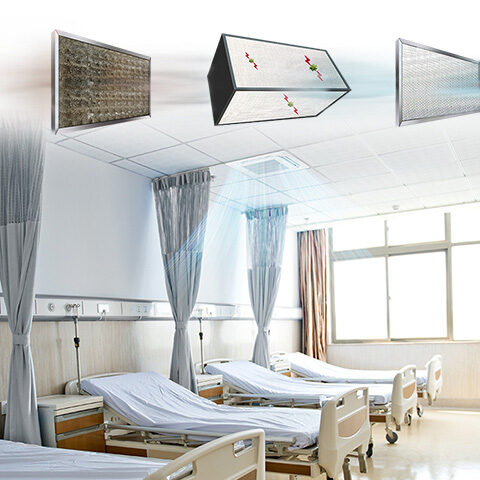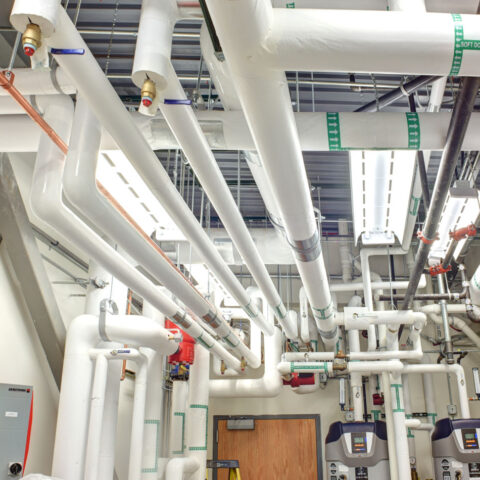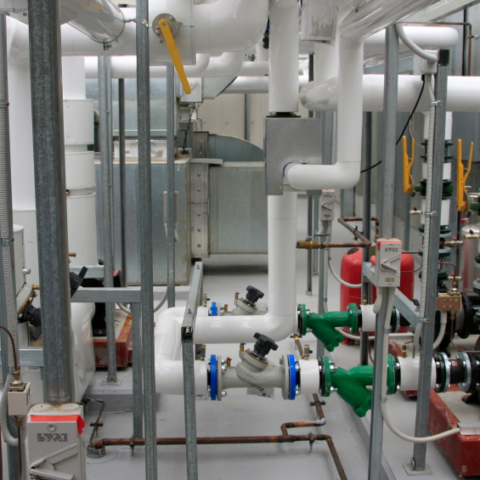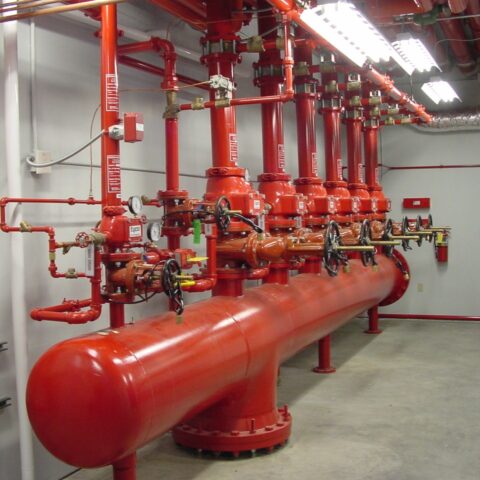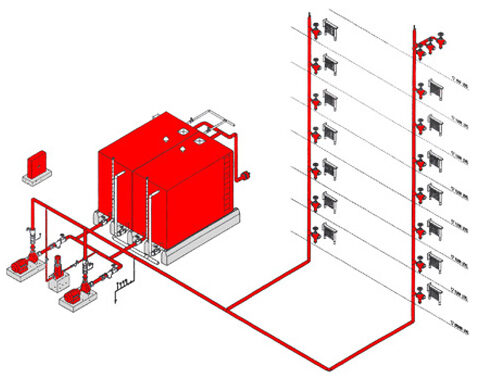Hospitals


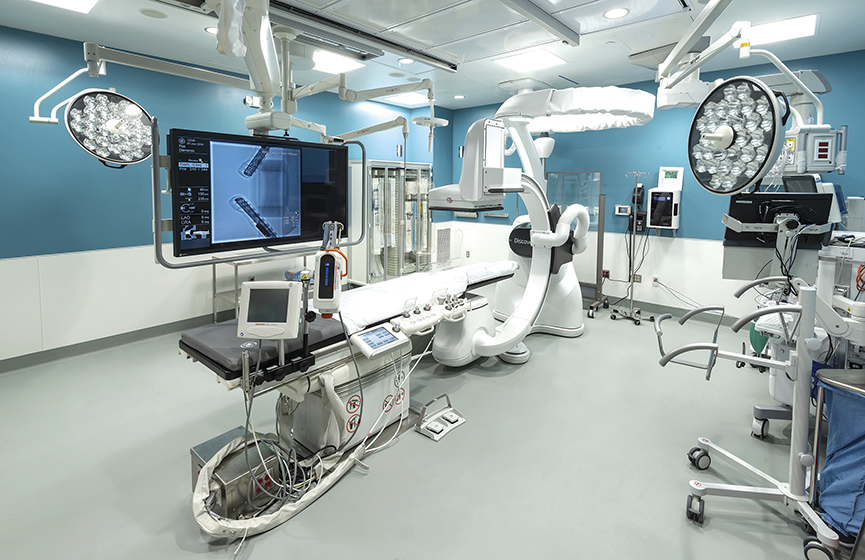
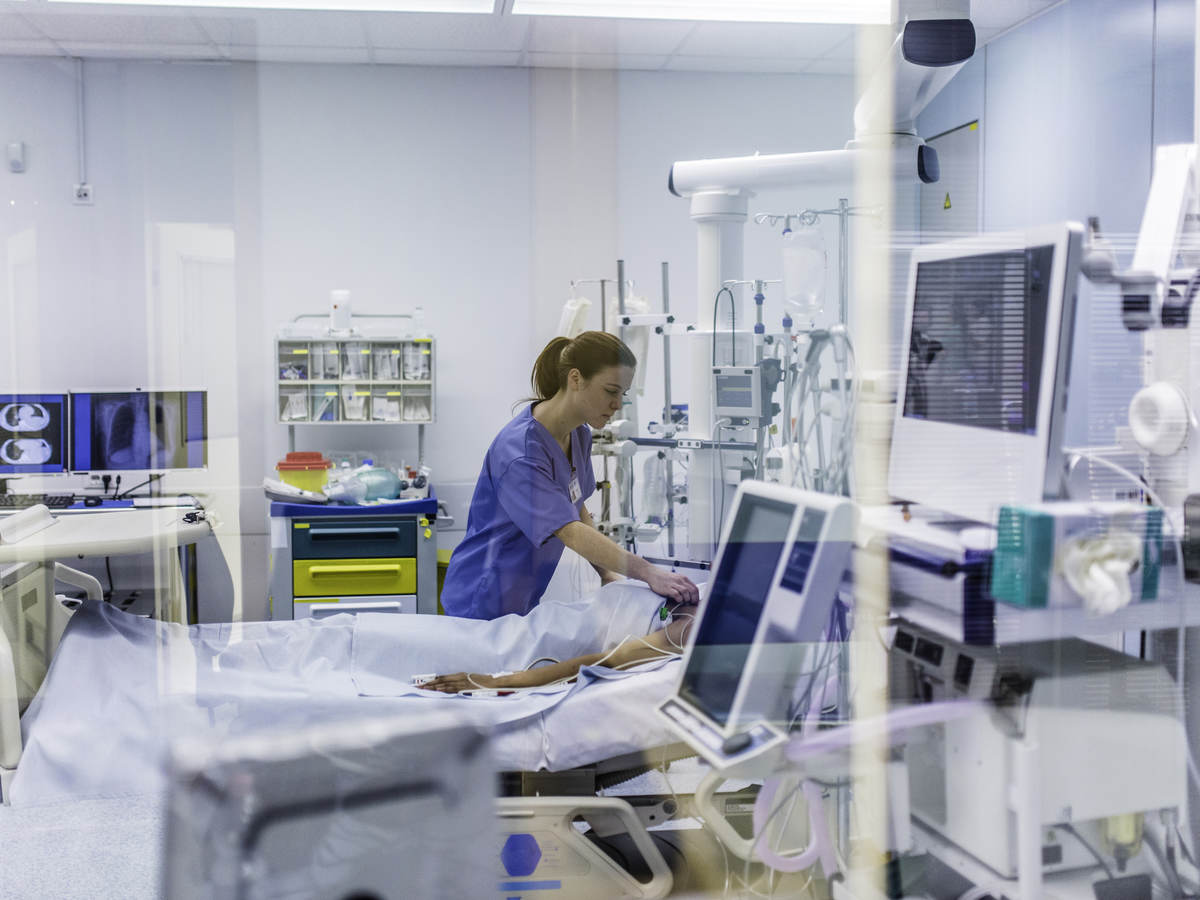
Intelligent HVAC systems in Hospitals
Basic requirements in the environment of hospitals include efficient heating, ventilation and air conditioning (HVAC) systems to maintain good indoor air quality (IAQ), sterile breathing conditions, and to secure healthy, safe and suitable indoor thermal conditions (i.e. temperature, humidity, air quality and airflow) for the hospital personnel and the patients
Owing to various types of facilities, delicate nature of hospital work and infection-prone patients, hospitals require more specialized, state-of-the-art HVAC solutions than most buildings; for example, hospital operation theatres (OTs) have very strict air quality index requirements, while, by contrast, hospital offices have practically the same requirements as any regular offices. Factors such as low ventilation rate, inadequacy of building HVAC systems, use of certain building materials and overcrowding, may result in indoor air pollution. Standards for hospital indoor air have not been established in most countries, but for example in Europe, standards for hospital indoor air are currently being developed.
Hospital ventilation must be effective for controlling airborne transmission and preventing outbreaks of infectious diseases, A correlation exists between ventilation, air movements in buildings and the transmission of infectious diseases Poorly designed/maintained (i.e. contaminated) and used HVAC systems are common in hospitals and often lead to poor IAQ which may cause sick building syndrome (SBS), various occupational hazards and hospital-acquired infections such as SARS, tuberculosis, chickenpox, smallpox, varicella, influenza and measles etc.
- HVAC
- Fire fighting
- Piping & Plumbing
We have a great deal of unfathomable knowledge regarding basic requirements of indoor air quality essential for a hospital and health care units. Our core team of engineers and technicians will explain a complete picture of the HVAC as a whole package that will comply with all international codes and standards in accordance with American Society of heating, Refrigeration and Air Conditioning Engineers (ASHRAE) , Sheet Metal and Air Conditioning Contractors’ National Association (SMACNA), National Fire Protection Association (NFPA) and the Institute of Electrical and Electronics Engineers (IEEE) which are well known internationally accepted engineering codes and standards
Hospitals are categorized among most sensitive buildings when it comes to fire hazards. The sensitivity is not only based on the materials and consumables regularly implied in health care units but also due to the occupants of the building which in the event of a fire cannot run away as in case of normal buildings.
The National Fire Protection Association (NFPA) 99, Life Safety Code®, defines a health care facility as, “An occupancy used for purposes of medical or other treatment or care of four or more persons where such occupants are mostly incapable of self-preservation due to age, physical or mental disability, or because of security measures not under the control of occupants.” “Incapable of self-preservation” means that the individual would not be able to get out of the building by himself in case of fire. Health care occupancies, according to NFPA 101are general hospitals, psychiatric hospitals, and specialty hospitals as well as nursing and convalescent homes, skilled nursing facilities, intermediate care facilities, and infirmaries in homes for the aged.
Around 45% of the occupants are considered as apparently disabled (serious patients admitted for a bed stay rest) to save their own lives while 30% among the rest are supposed to be the hospital staff and supporting personals which may have been involved in saving other patients’ life during misfortune incidence of fire.
All this simply means that the fire extinguishing systems for hospitals must have been designed flawlessly to warn the staff, the occupants and the firefighting crew in a timely manner. Efficient Smoke detectors, dedicated fire alarms, emergency lighting, fire hydrants, sprinklers and portable fire extinguishers are installed in a predefined order as directed by the designer to meet the requirements of efficient fire extinguishing system of a hospital.
Above all, a centralized monitoring system of all smoke and fire detection points is also mandatory for vigilant surveillance of the occupancies and health care units covered under the system.
Healthcare presents a unique set of circumstances and considerations when planning, installing and maintaining plumbing systems.
Hospitals, aged care and specialist medical services operate under high levels of hygiene to protect vulnerable patients from exposure to bacteria. Infrastructure therefore needs to minimize the risk of bacterial outbreaks.
The design and fit-out of a healthcare plumbing system needs to consider: how will it be installed; how often will it need to be maintained; how will water move around and at what speed and temperature, and what material should be used for the pipes. In most instances, the use of stainless steel pipe provides the greatest flexibility and durability for a healthcare Unit.
Most plumbing infrastructure in a hospital will be situated behind walls or under floors and consequently once installed, maintenance should be kept to a minimum to prevent disruption and exposure for patients and practitioners. The use of stainless steel provides the best option for durability, with a long service life.
The lightweight nature of stainless steel makes the installation process efficient for plumbers, enabling the installation team to quickly and easily assemble the pipe system. Longer spans between support brackets can also be achieved as it doesn’t flex under gravity.
Piping and plumbing services may include, potable water and drainage system, firefighting, HVAC cool and hot water pipes, Oxygen transfer pipes and ventilators’ interconnecting piping in case of a large Healthcare Unit.
Project Gallery
We don’t have much to showcase for the moment but we are providing consultancy services for an under construction state of the Art Indus Hospital. Many others are on our radar to catch up with ..

